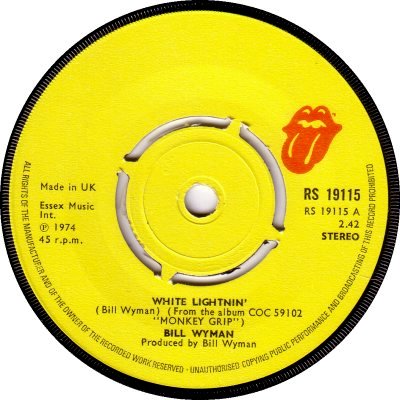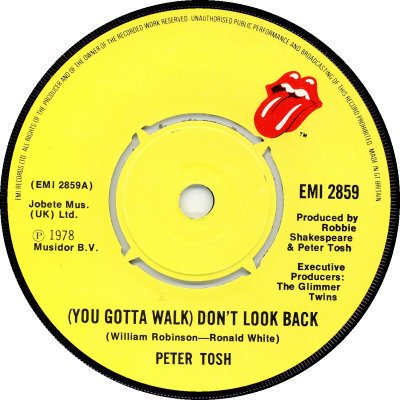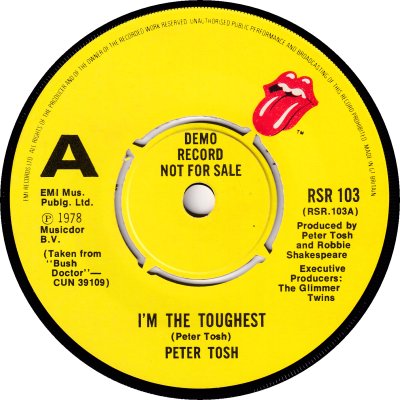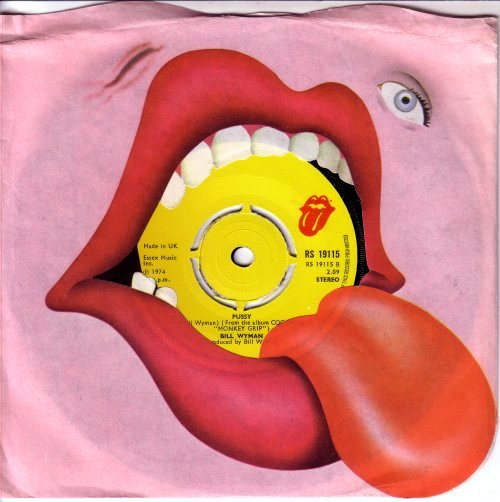





The Rolling Stones' own label; but I daresay you'd guessed as much. Plans for the band to have its own label were first mentioned in Record Retailer of the 21st of February 1968. According to the article it was to be called 'Mother Earth' and drummer Charlie Watts was designing the logo; the company was intended to operate out of premises at 46A Maddox St, London W1. Nothing much seems to have happened in practical terms, but the idea remained alive: 'RR' of the 16th of July 1969 quoted the Stones' manager Allen Klein as saying that there was 'a good possibility' of the band launching its own label, which was still to be called 'Mother Earth'. When the new label was eventually born, however, some two years or so later, the 'Mother Earth' name had been dropped in favour of that of the band.
Rolling Stones Records was set up in 1971, with Marshall Chess as label manager and Atlantic as distributor in the USA. The plan was for it to feature and develop new talent discovered by the Stones, but that never really happened - apart from a few things by Peter Tosh and a group called Kracker the label's output consisted of records by the Stones as individuals and as a group. The first single and album on the label came out in April 1971; they were handled initially by CBS in Britain, pending an official agreement between CBS and Kinney coming into play ('RR', 1st May), but Kinney took over when that agreement was finalized. Manufacture was by CBS (1). Kinney evolved into WEA; after some five years of sharing a joint distribution network with CBS it set up its own distribution facility, in early 1976, and the Rolling Stones label went across to it along with its own labels. In February 1977 Rolling Stones moved to EMI, becoming part of that company's 'Domestic Repertoire' division ('Music Week', 26th February). EMI took over both manufacture and distribution; the label design remained basically the same but the style and placement of the credits changed and the logo gained a few touches of white (2).
Singles had their own RS-19100 catalogue numbers during the Kinney / WEA period; during the EMI years they initially shared EMI's singles series before being given an RSR-100 series of their own (3). It appears that only one single during the Kinney / WEA years had specially-marked promo labels (4), but during the EMI period they became commonplace and were marked in the usual EMI manner (5). The distinctive company sleeve (6) seems to have only been used during 1971-74. The company continued to issue records into the 1980s and beyond, basically acting as a vehicle for material by the Rolling Stones themselves. It never had its name on its label, the 'lips' logo being reckoned sufficient identification. 'Music Week' of the 30th of September 1978 gave the name of the man responsible for the logo's design as John Pasche, of Gull Graphics. The discography below only covers the 1970s; many of the gaps in it are due to the numbers being used for overseas releases.
('Both Sides Now'; www.bsnpubs.com)



Copyright 2006 Robert Lyons.

